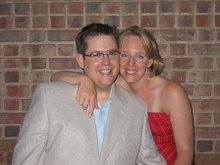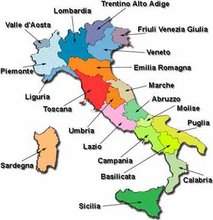Siena was on the main pilgrimage route from Northern Europe to Rome and the south and was a frequent stopping point for pilgrims. The constant influx of of pilgrims helped establish the Monte Paschi di Siena bank and also was responsible for the establishment of the Spedale di Santa Maria della Scala, the hospital. Although this is no longer the hospital (thank god!) it served as the city's hospital for more than 800 years and was in use until the 1980s-Yikes! Today it functions as a museum.

Santa Maria della Scala is part of Piazza del Duomo and is right in front of the Duomo (the Duomo faces the spedale). Santa Maria was one of the first hospitals in all of Europe! Legend says that the hospital was established in the 9th century by a cobbler turned monk who took care of orphans. However, it is more likely that the hospital was established by canons from the cathedral (duomo) to provide hospitality and medical care for pilgrims (the hospital also was an orphanage, taking in gettatelli, abandoned children).
Siena was on the Via Francigena, the trade route between Rome and Northern Europe. The route passed right below the city walls of Siena. As a result, numerous rest stops (ospedali) sprung up around Siena. There were more than 40 ospedali within the Sienese territory and Santa Maria della Scala was one of the most important ones.
These ospedali were established with the intent of serving as an abode and shelter for pilgrims, not necessarily a hospital by modern terms. Santa Maria and the other ospedali were to function as a hospital that looked after the sick, but also could serve as refuge and a food kitchen for the entire town during periods of plague and famine. The credo of Santa Maria was "hospitality rather than hospitalization."

The church controlled the hospital until the 14th century and used donations to support itself (the earliest recorded donations are from 1090!). By the 14th century the city had taken control of the hospital.
Some of the funds donated to the hospital were diverted away from humanitarian purposes to artistic and architectural commissions. During the 1500s, the exterior facade was frescoed (these works were destroyed by the elements) and an interior room, the Sala del Pellegrinaio, was also frescoed.

The Basilica di San Domenico was built in the 13th century by the Dominicans and dominates the area surrounding it. Saint Catherine, the patron saint of Siena, was said to perform miracles here. If you go inside the church you can see Saint Catherine's face and thumb preserved (although ironically her face and thumb are on opposite sides of the church!). It is a little freaky!

A crumbling old building....

The Loggia Mercanzia is located at the intersection of Via Banchi di Sopra (the main street in Siena) and Via Banchi di Sotto (which leads to a Porta Romana, and onwards to Rome). It was designed as a tribune house for merchants to do their deals and also a site where the daily exchange was established.

It was also at this place where traveling pilgrims had to decide whether to continue along Banchi di Sotto to Rome or continue along to Siena's cathedral. All the faces of the statues on the Loggia (pictured below) face North, up Banchi di Sopra, indicating to the pilgrims that they should stop in Siena.

The ornate ceiling in the Loggia.

Continuing down Banchi di Sotto (towards Porta Romana) you come across Palazzo Piccolomini. This is one of my favorite buildings, especially at night. It was commissioned in the 1460s by Pope Pius II, who was one of the city's great Renaissance patrons. It was built to be one of three palaces that the pope built for his family in Siena.

The palazzo now holds the Archivo di Stato, the city's archives, and a few stores and enotecas.


Details on the building.


Ollie and I continued along snapping a few more pictures as we went...our apartment is somewhere over there.



Reed and I have also managed to take quite a few pictures of interesting pictures of fountains and statues-thats for another time.
Today we need to finish making hotel reservations for our upcoming trip and try to get Ollie is pet passport!








1 comment:
The inside of that hospital is stunning! What impacts me more is seeing the frescoes, and being told that beds used to line these halls not that long ago!
What impressed me more about the hospital, is that it took orphans, and educated girls 1000 years ago! Equal education. Literacy for both boys and girls, a thousand years ago! I love it ;)
Post a Comment